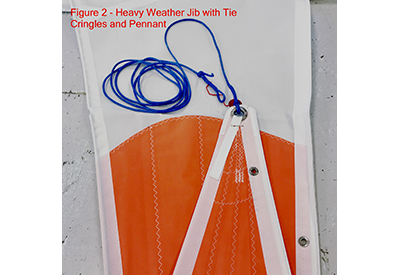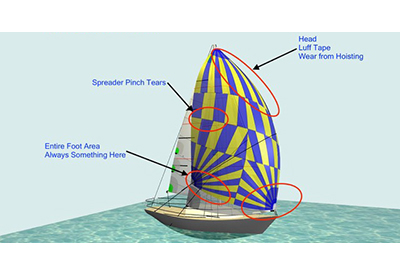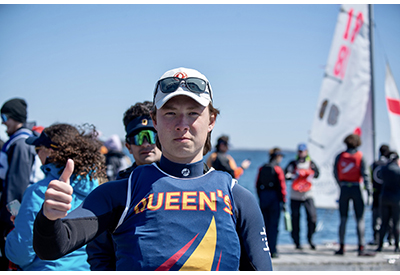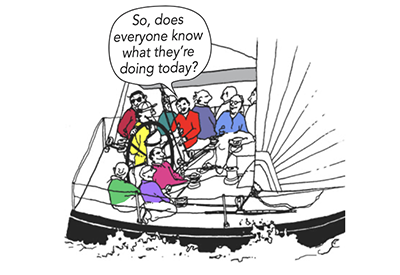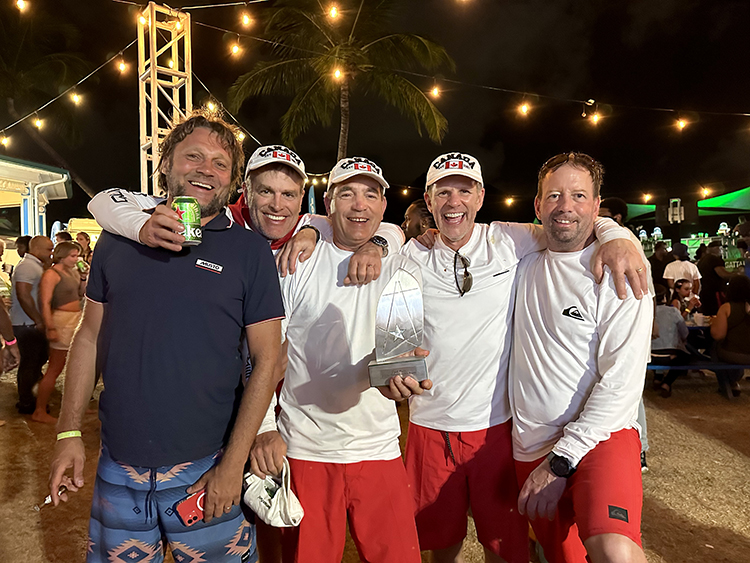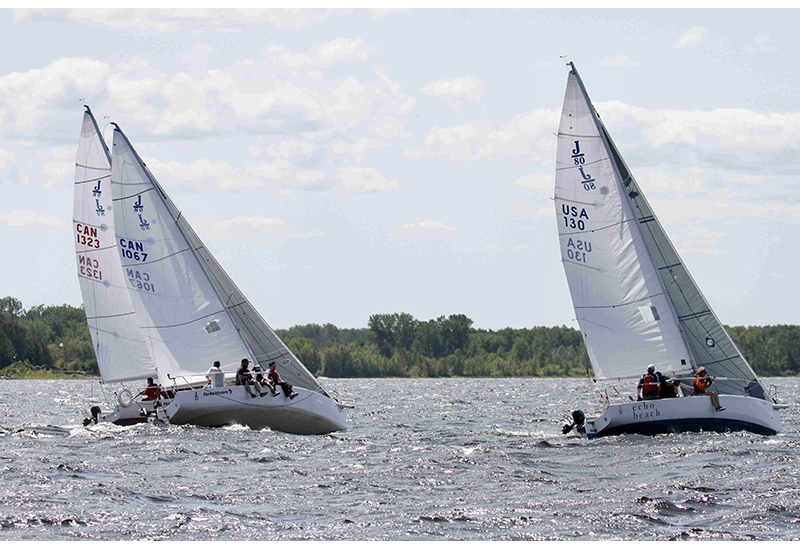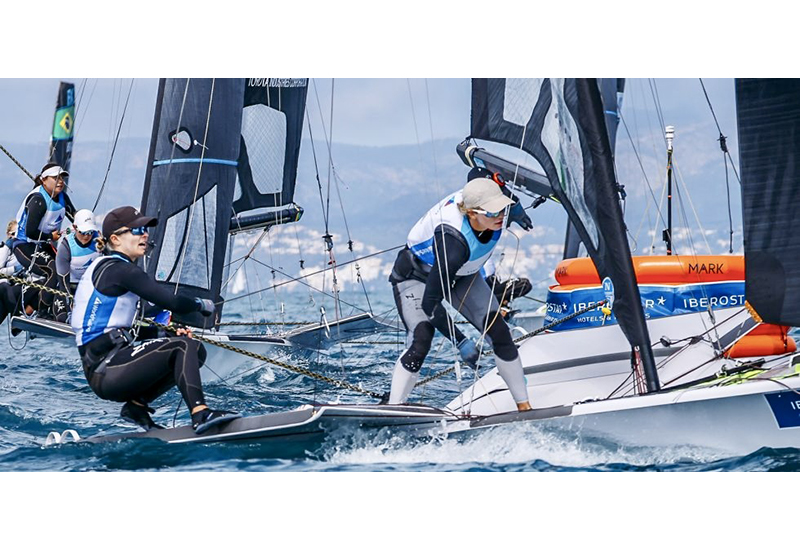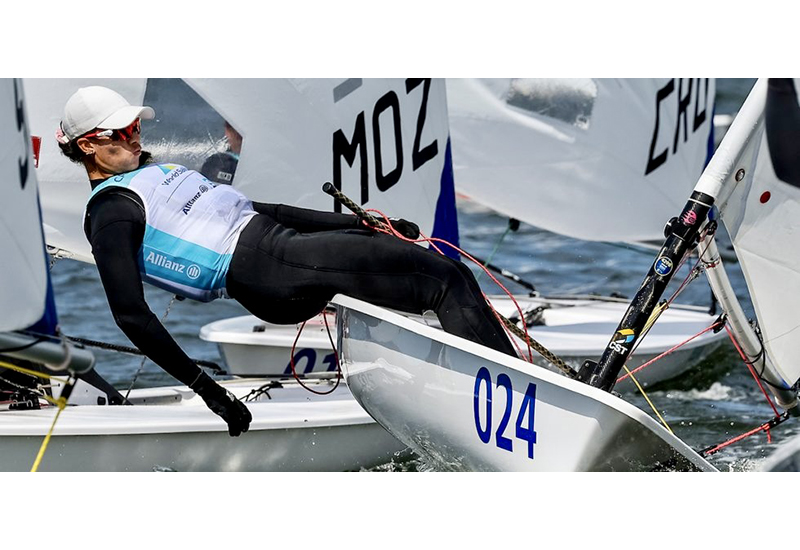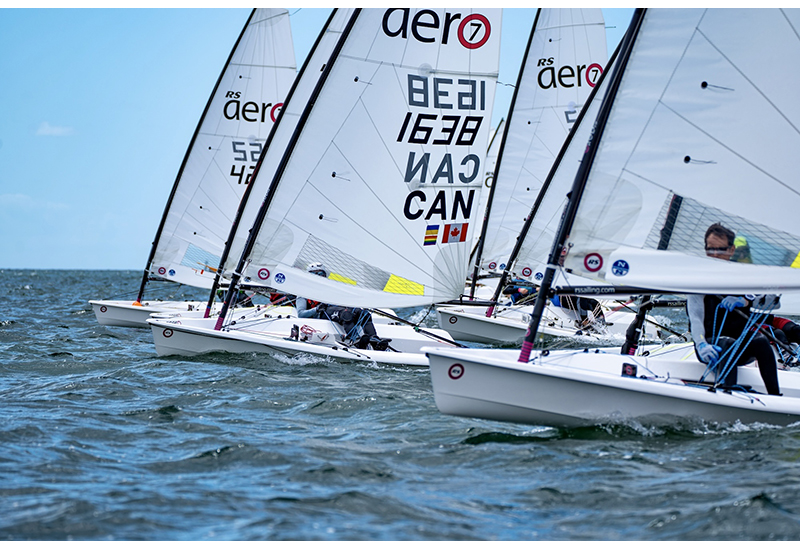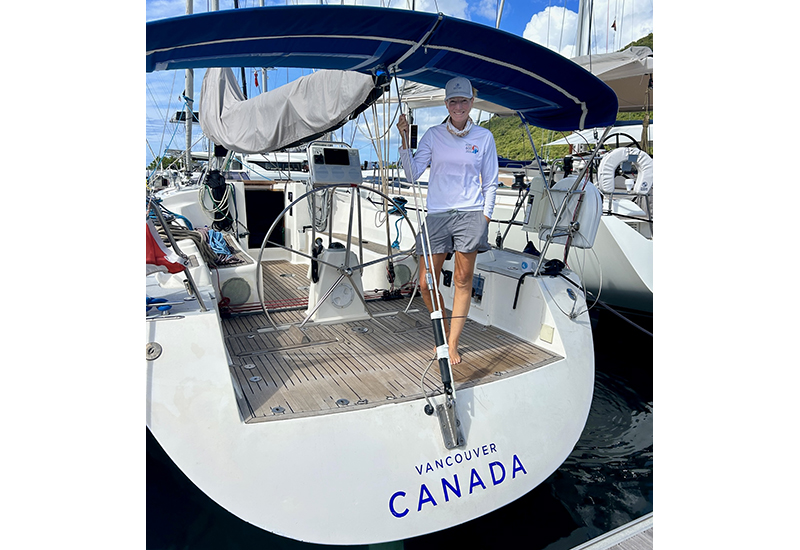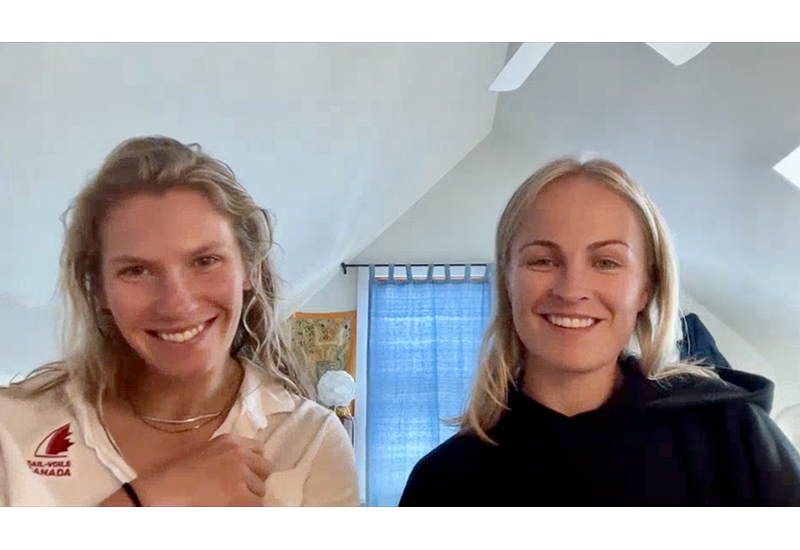Sail Techology: Sailing in the Right Gear
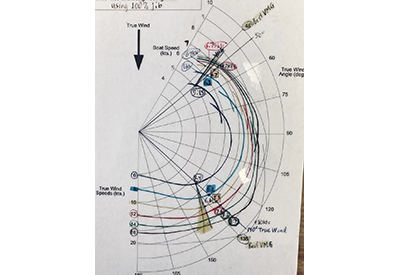
July 13, 2022
I was helping teach my daughters to drive a 5-speed manual over the last while, and they have gotten very good at it. The clutch has survived, and they willingly take that car when they need it, so I think that is a win. I only wish my customers would figure out the 3 gears they need to race a sailboat!
Where are these gears?
They aren’t exactly gears, but “modes” of sailing. Upwind there are 3 modes: FAST/low, VMG (normal), HIGH/slow.
Why do you need these?
On a perfect racecourse with no other boats around, sailing in the middle mode VMG would be optimum according to the text books. It is the angle to the wind and trim that optimizes speed and pointing to make the best progress (also known as Velocity Made Good) to windward. These are the magical speed and angle numbers you can divine from your polar tables, or when you sail your telltales at nearly full upwind trim. The problem is that wind shifts and other boats on the course tend to make polar table and VMG sailing nearly impossible. Polars also don’t consider wave condition which often makes sailing ideal target speeds nearly impossible. Instead of slavishly sailing target VMG, you need to rely on sailing very slightly higher or lower than target speeds or angles to get a strategic or tactical advantage on your competition.
Figure 1 – Polar Plot
What are the situations to use a mode? Assume you are upwind coming off the start lines and there is a pack of boats just to leeward of you. This would be a great time to sail high and consequently a bit slow, just to give yourself breathing room and block their ability to tack onto port. Another example is you are to leeward of the same group, but want to get to a puff you can see on the water ahead. Sailing slightly low but fast will get you to the pressure before your competition. Both are to your advantage!
Sometimes you will sail downwind in a high and fast (opposite to the upwind) mode to get to some fresher breeze, and then gybe over and sail a low and slow mode to get to the leeward mark and stay in the breeze longer. You win with both modes!
These modes aren’t a very large angle difference upwind, only a range of 3-5 degrees. Downwind you can see 10-15 degrees of angle difference. Before you think that mode sailing is just subtly changing direction, it is far more than that.
How to Upwind Low/Fast
If you just bear off, the boat will heel and load up the rudder. This rudder drag will slow you down, so reduce your sail power to reduce the heel and rudder load. The sail controls that will help you quickly with this is dropping the traveller car and adding some backstay tension. The traveller immediately reduces weather helm. Adding backstay will quickly flatten out the jib and open the mainsail leech which reduces helm load. If you have side adjustable jib cars, easing the crosshauler to leeward will also free up the boat. Another important thing is to HIKE and even move your weight slightly aft to keep the rudder in the water and increase the rudder efficiency. There are limits to this mode, if you are overcanvassed with a large genoa and you are trying to foot in 18 knots of breeze the boat is not likely going to cooperate. If you try to Low mode and the boat fights you even after you do all the tricks, it isn’t going to work.
I always try modes by having the tactician watch the bearing to the boat you are drag racing. If you go low and you start gaining bearing and walking ahead of your competition that is fantastic. If you get to the point where the competition gains bearing, start over and match angle with them to neutralize their gains.
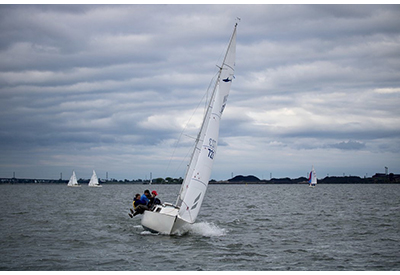 Figure 2 – Fast and Low Mode
Figure 2 – Fast and Low Mode
How to Upwind High/Slow
This is what I call the greedy mode. I don’t use it nearly as much as low and fast, and when I do use it, it is only for limited amounts of time. This is 30 seconds at a time mode before you go back to a vmg/normal mode. If you have good speed, you can use the speed and lift to make small gains to windward, but not so long that you lose more than half a knot or so. As speed drops, your underwater efficiency drops.
In this mode, the boat tends to lose the comforting weather helm, so you need to power up the leech of the main by tightening the sheet and showing more stall in the leech tell tales. If your outhaul works easily, you can even give it a small ease, which will increase the leech rebound to windward and add quite a bit of helm.
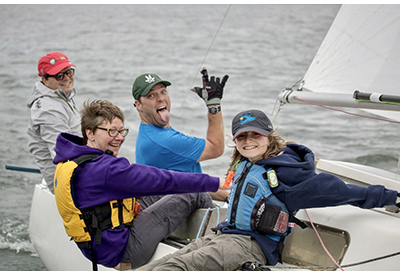 Figure 3 – Crew Work
Figure 3 – Crew Work
Downwind High/Fast
The increased rudder load is the similar as the Low/Fast Upwind setting. Since you are reaching, the boat is going to have helm, so look at similar sail adjustments, but not necessarily adding backstay to flatten the main. Ease the sheets and let off the vang a little bit. Vang tension will give you lots of helm, so pay particular attention to it. Once the main starts luffing, you really should bear off, as the boat will bounce back and forth between lee helm and weather helm. THIS IS NOT FAST!
Downwind Low/Slow
The spinnaker trimmer is in control of this mode, giving constant feedback of the amount of pressure in the spinnaker. The goal is to keep enough pressure on the sail to have decently responsive trimming and not let the sail dive behind the mainsail.
It is very important to reduce wetted surface, so move your weight forward and even try to add some weather heel. The shape of the hull in the water when heeled to windward will naturally give the boat leehelm and reduce the rudder movement. Reducing helm movement is the goal.
Recap
It is very important to be changing modes and communicating those changes with the crew. This allows them to make the sail control and weight placement changes required to pull it off. Practice your modes and make everyone wonder how you got so fast!
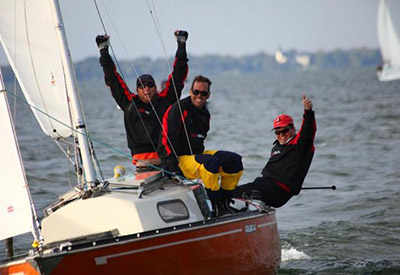 Keven Piper, two-time Shark 24 World Champion, founded Hamilton, ON-based Bay Sails in 1998. Email: baysails@gmail.com
Keven Piper, two-time Shark 24 World Champion, founded Hamilton, ON-based Bay Sails in 1998. Email: baysails@gmail.com

